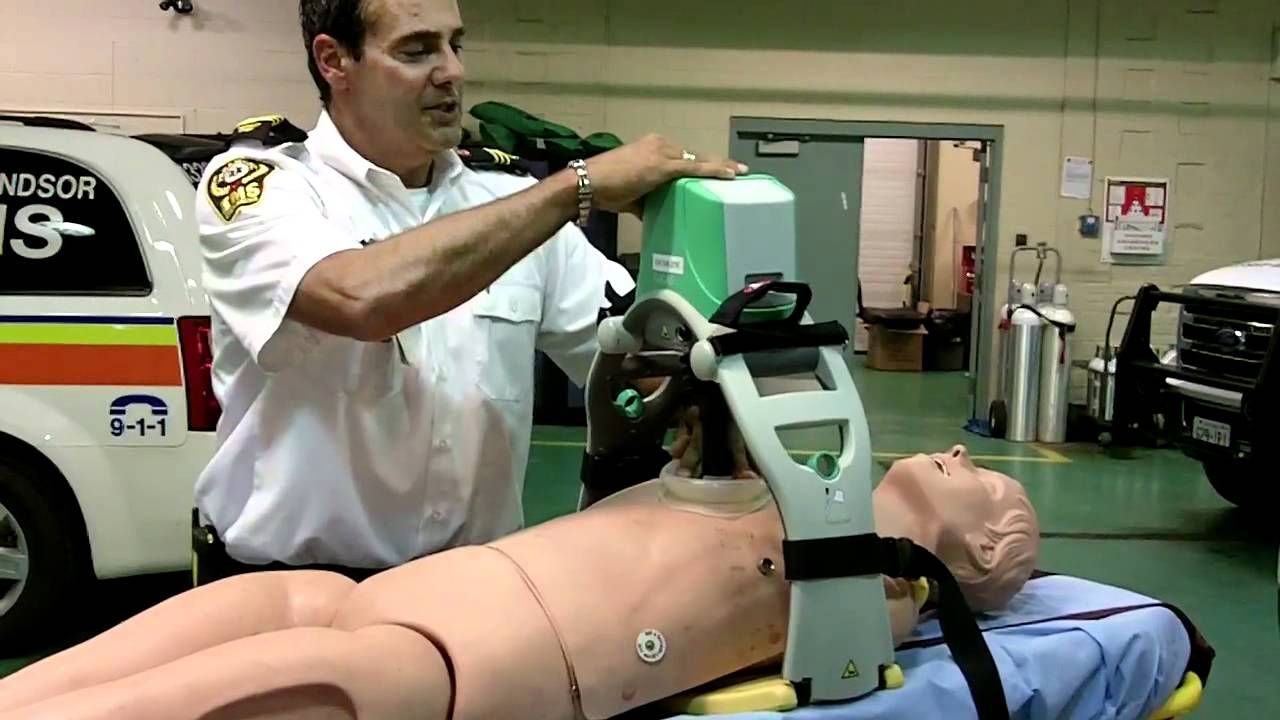Cardiac arrest is a life-threatening medical condition that occurs when the heart malfunctions and stops beating unexpectedly. Cardiopulmonary resuscitation or CPR is a life-saving technique that is used to pump oxygenated blood by manually compressing the chest of the patient when spontaneous breathing or breathing has stopped. However, performing manual chest compressions requires specialized training and is physically demanding. Automated mechanical devices have been developed to perform consistent, high-quality chest compressions, especially in situations where trained responders are not available immediately.
How Automated CPR Devices Work
Automated CPR Devices use a mechanical component to perform uninterrupted chest compressions at a consistent rate and depth on a patient in cardiac arrest. These devices are battery-powered and designed to administer chest compressions according to the latest resuscitation guidelines. Some key features of automated CPR devices include:
– Piston or load-distributing band mechanism: This component compresses the chest at a standard rate of 100-120 compressions per minute and about 2 inches deep to circulate oxygenated blood.
– Built-in metronome: The device maintains a consistent chest compression rate guided by an audio metronome built into the system.
– Compatibility with backboards: Many automated CPR devices can be used on patients lying on a backboard or spinal board to administer compressions safely.
– Ease of use: The device mounts or attaches to the patient’s chest easily and can be operated by emergency responders with minimal training.
– Adherence to guidelines: Devices adhere to the latest 2015/2020 American Heart Association CPR and emergency cardiovascular care guidelines.
Benefits of Automated CPR
Automated CPR devices offer several advantages over standard manual CPR, especially in out-of-hospital cardiac arrest situations:
– Consistency: Devices deliver uninterrupted chest compressions consistently at the right depth, rate, and recoil recommended by guidelines. This ensures optimal blood flow to vital organs.
– Physical effort: Sustaining high-quality manual CPR can be exhausting for providers. Automated devices reduce physical burden and allow for longer cycles of high-performing chest compressions.
– Portability: Some portable automated CPR devices are lightweight and easy to transport, making it suitable for emergency response in ambulances, helicopters, and other terrain.
– Less interruptions: Interruptions in chest compressions for ventilation or provider changes is minimized with continuous mechanical compressions, maximizing the chances of return of spontaneous circulation.
– Variability prevention: Automated devices prevent variability in performance due to differing physical strength or fatigue between manual CPR providers over prolonged resuscitation attempts.
– Feasibility: Devices can provide effective chest compressions when sufficient or trained rescuers are not immediately available, such as in remote or rural areas.
Challenges of Automated CPR
While automated CPR devices address several limitations of standard manual CPR, there are still some challenges associated with their use:
– Cost: The technology and engineering involved in developing automated CPR devices make them more expensive compared to basic manual strategies.
– Effectiveness in children: Most automated devices are designed for use on adult patients and may not be suitable or as effective for smaller pediatric patients.
– Transport time: Initiating mechanical compressions at the site of cardiac arrest may delay time to initial defibrillation attempts or transport to advanced care facilities.
– Device failure: Reliance on battery power or mechanical components carries a small risk of device failure during resuscitation attempts.
– Accessibility: Widespread adoption may require further education, training, and availability of automated CPR devices across different emergency response levels.
– Airway management: Ventilation still needs to be provided manually along with the mechanical compressions using a bag-valve mask.
– Ease of transition: Rescuers need to practice seamless transition from mechanical to manual CPR and vice versa depending on transport needs or responder fatigue.
Future of Automated CPR
As technology advances, future generations of automated CPR devices are being designed with improvements to address current challenges:
– Lighter, compact designs with enhanced portability for different response settings are being evaluated.
– Devices with integrated capabilities for automated chest compressions and ventilation support are under development.
– New algorithms for devices to adapt compression parameters based on individual patient characteristics can enhance effectiveness.
– Automatic integration with other resuscitation aids such as AEDs and real-time feedback devices might be possible.
– Pediatric versions suitable for child patients are beginning to be made available commercially.
– Wider training initiatives are educating more rescuers to adopt automated CPR skills.
– Gradual decrease in cost with mass production and refinement of technology will maximize accessibility.
Automated mechanical CPR devices have significant potential to standardize and improve the quality of chest compressions provided during cardiac arrest resuscitations. Larger clinical trials continue to validate their benefits compared to traditional manual CPR. As technology matures further, automated devices are likelier to transform out-of-hospital and in-hospital resuscitation protocols in the future by sustaining optimal chest compressions during cardiac emergencies. With more focused development and wider adoption, they can play a pivotal role in bolstering bystander CPR efforts and cardiac arrest survival rates globally.
*Note:
1. Source: Coherent Market Insights, Public sources, Desk research
2. We have leveraged AI tools to mine information and compile it


